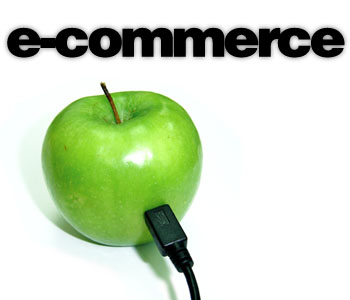This article contributed by Michelle Ulrich.

Why should you think about your niche, your ideal client and your message? If you don’t and your competitor does, guess who will get the client or close a sale? Your competitor will. These three areas will set you apart, create your unique selling proposition, and differentiate you from your competition.
As you work your way through each of these steps, you will begin to unfold the reasons why someone would want to do business with you versus your competitor.
Before we begin exploring your niche, let’s discover your passions. Your passions will tell you more about yourself and what to focus on in your business than you thought possible. Write down your current passions, things that you love to do, things that you could spend all day on if you had the time and no one interrupted you. Next, write down passions you used to feel that way about. Finally, write down things you think you would love to learn, things that you think would absolutely love to do someday. Don’t cheat yourself by writing things down you think others want you to do or explore. This is for you and you alone!
Grab a piece of paper, make three columns with the headings: 1) Current passions, 2) Past passions, and 3) Future passions (to explore). Write down as many things that come into your mind. Try not to let your mind tell you that you can’t write something down—write whatever comes to your mind. Don’t let negative self-talk enter your mind and keep you from writing something down. It could be the best stuff that comes out of your brain!
Now, look at all of your passions and see if there are any items that might correlate, like a child’s matching game. Draw a line connecting the items you think you’d like to match up even if you think there is no way they could realistically work together. Sit with this, sleep on it and then ask yourself if there are any possibilities, creative ways to match up these passions into your business. If you still don’t see it, ask others what they think. Be careful to ask others who are non-judgmental, and impartial. Seek out a SCORE counselor at www.score.org and ask the counselor what they think. Asking family and friends may work if they know you and are open-minded. Sometimes, those closest to us can be the most closed-minded. You may even ask a child, a high school student, or college counselor what they think.
Once you’ve determined your passions, you can layer on your skills to add a new dimension. Let’s try this example:
Michelle’s current passion is speaking on Virtual Assistance, her past passion was writing poetry and a future passion she would like to explore is traveling. She could match these up and combine them by speaking on Virtual Assistance as she travels throughout the country. In addition, she could write poems or do creative writing in her speeches, her Virtual Assistant practice, or as a ghost writer for her clients.
Identify Your Niche Specialty
Your niche could be the type of work you perform or the industry in which you would like to work. So, don’t get caught up on an industry type. You can confidently say to those who say you ‘should’ have a niche, “Yes, I work in [type of work] or [industry] as my niche.”
1. Identify your niche (type of work), then narrow it down further to specific areas of concentration
a. Academia – theses, term papers, reports, research…
b. Event Planning – small, medium, large
i. Corporate, small business, individual
ii. Themes, holiday, other
c. Ezines
d. Graphic design/Desktop publishing – advanced, intermediate, simple
e. Real estate – transaction coordination, marketing, listings…
f. Shopping carts
g. Transcription – general, court, medical – dental, surgery…
i. Digital, video, DVD…
h. Travel – research, bookings – air, car, cruises, hotel, destination
i. Web design – advanced, intermediate, simple
Write down your top three specialties.
Identify Your Niche Industry
2. Identify your niche industry then narrow it down further to specific areas of concentration.
a. Animals – veterinarian clinics, breeders, pet sitters, dog groomers…
b. Authors – fiction, non-fiction, children’s books, cookbooks…
c. Coaches – business, corporate, life, relationship, financial, parent, holistic…
d. Environment – entrepreneurs, builders, solar professionals…
e. Food – caterers, bakeries, dessert diners, and mom-n-pop deli’s…
f. Real estate – luxury homes, commercial, residential, horse property…
Write down your top three industries in which you’d like to work.
Your Ideal Client
3. Identify your ideal client. Get as specific as if you were describing your best friend, or the neighbor next door.
a. Gender – female
b. Age – 30-60 years of age
c. Values – easy going, passionate, excited about their business, fun, want to be connected and is aware of what is going on in their industry, and wants to stay on the cutting edge as they grow their business.
d. Profession (s) – authors, coaches, speakers
e. Financial – financially fit and make an excess of $50,000 per year
f. Health – fit and work at it every day
g. Spiritual – doesn’t matter as long as they respect my different points of view
Describe your ideal client. Let your imagination run wild. If you describe your ideal client as if he or she is sitting across from you while you have a cup of coffee or tea, that is the perfect set up/scenario. Pretend you are conversing with him/her; write down on your paper how you would describe him/her as if you were introducing him/her to your best friend. Don’t leave out important details like being able to afford you, they respect you as a person and as a professional, etc.
So, now, your ideal client should be clear in your mind. Example: “My ideal client is between 30-60 years old, a female author, coach, and/or speaker, who shares my values. She is both financially and healthfully fit, in addition to being respectful of my spiritual boundaries.
Your Message
4. Write out your 30-second message, read it aloud to yourself, read it aloud to your family, then your friends, then your colleagues, and finally, to strangers who could be your potential clients. Rehearse it in the mirror to see how it looks, record it to hear how it sounds, and keep improving until you feel you’ve nailed it and it doesn’t sound rehearsed. Find passion in your voice when saying what you do; others listening will become excited, too.
Example: “I specialize in working with authors, coaches, and speakers who struggle to keep up with e-commerce and new technologies. I take the struggle off their shoulders, relieving them of the stress. I implement their needs to help them grow their bottom line without having to learn all the new technologies themselves.”
Try this for your business. “I specialize in working with [fill in the blank] who struggle to keep up with [fill in the blank]. I implement their needs to help them grow their bottom line without having to [fill in the blank].
You are now prepared to go forth and prospect for clients. You know your passions, niche (type of work or industry), who your ideal client is and you also have a clear message. Now, you can help others to be empowered to help you find and refer the right clients to you without hesitation.
Go with passion and excitement—it’s yours for the taking!
About the Author
Michelle Ulrich is the Chief Villager and founder of The Virtual Nation, an educational destination for Virtual Professionals around the globe. Michelle is an avid believer in giving back to her industry and she does this by offering coaching, teleclasses, resources, and tools, in addition to providing a community of learning, a nation of culture, and a virtual village for her members. Education is the foundation of her organization as well as for her own personal and professional development. Michelle has been a community college instructor teaching a Virtual Assistant certificate program online. Aside from coaching and teaching, she is also a speaker and soon-to-be author on the subject of Virtual Assistance. She maintains her private practice where she specializes in working with authors, coaches and speakers who struggle to keep up with e-commerce and new technologies. Clients can check out her services at www.virtualbusinessmarketing.com, while Virtual Assistants can find her over at www.thevirtualnation.com. She can be reached by telephone at (916) 536-9799 in the Pacific Time zone.




